Introduction:
Union Finance Minister in the Union Budget for 2022-2023 announced National Ropeways Development Programme aka Parvatmala Project to improve connectivity in hilly areas. Sustainable and effective modes of transportation have received more attention in recent years, particularly in areas with difficult terrain and stunning scenery. The Parvatmala Project is an outstanding initiative that aims to use ropeways to improve connectivity, increase tourism, and advance local economies in India’s hilly regions. It is an important project within the National Ropeways Development Programme.
The rail and air transport networks are limited in hilly areas while the development of road networks has technical challenges. It is the first time government is recognizing the cable car as the new mode of travel, earlier it was used just for tourist attractions.
In this blog, we will delve into the details of the Parvatmala Project and its role in transforming transportation and accessibility in some of the most picturesque parts of the country.
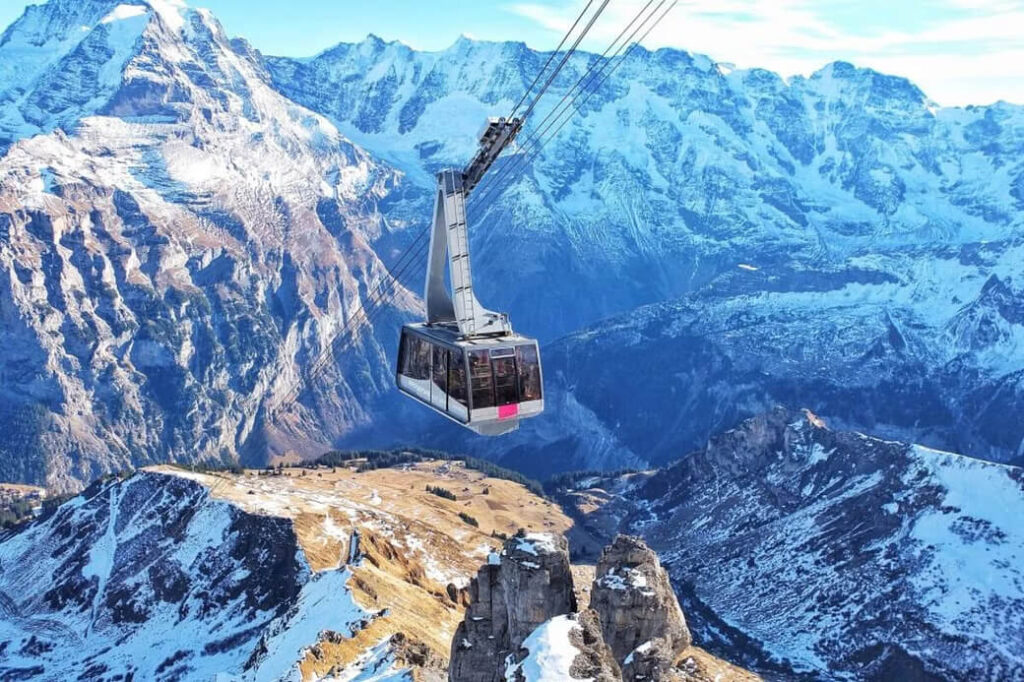
Ropeways: A Glimpse into the Technology:
Ropeways are modern transportation systems that employ cables and gondolas to move people and cargo through challenging terrain. They are also referred to as cable cars or aerial tramways. They have grown in favor all around the world due to their effectiveness, minimal impact on the environment, and capacity to navigate difficult terrain including mountains, valleys, and rivers.
The Parvatmala Project takes advantage of this technology to address connectivity challenges faced by remote and hilly areas.
The Vision Behind the Parvatmala Project:
The Parvatmala Project is a flagship initiative of the National Ropeways Development Programme, which is designed to create a network of ropeways in mountainous regions of India. The scheme will be implemented using a PPP (Public Private Partnership) model which will be a preferable ecologically sustainable alternative to conventional roads in difficult hilly areas. The project is driven by a multi-fold vision:
Enhanced Connectivity: The Parvatmala Project’s main goal is to improve connectivity to isolated, hilly areas that are frequently cut off by physical impediments. These locations can be seamlessly connected to urban centers by installing ropeway systems, which will ease the movement of people, commodities, and services.
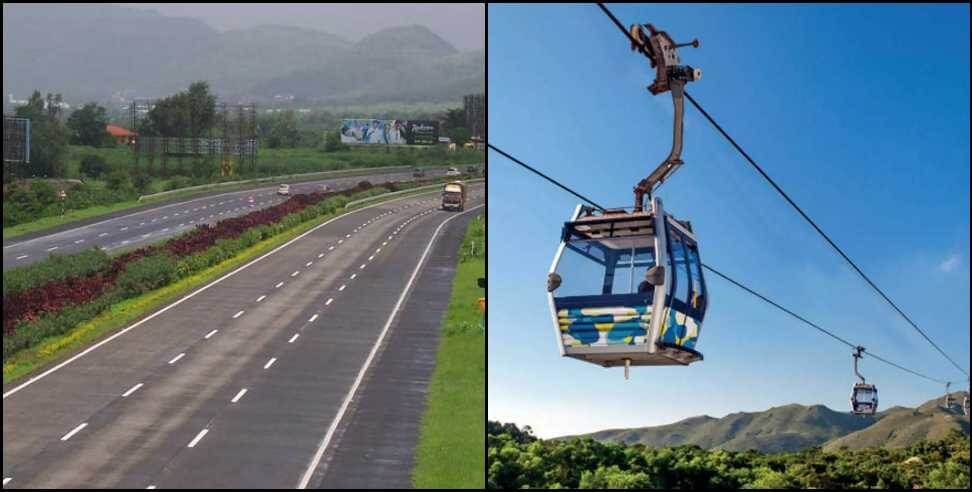
Boosting Tourism: There is a rich cultural history and spectacular natural beauty in many of India’s hilly regions. By building tourist-friendly ropeway paths that provide panoramic vistas and simple access to well-known attractions, the Parvatmala Project aims to take advantage of this potential. This in turn may support greater tourism and economic development in these areas.
Economic Development: Ropeways can spur economic growth by providing new options for regional businesses and entrepreneurs. Increased trade, agricultural growth, and the formation of new industries can all result from improved accessibility, ultimately boosting local communities’ standards of living.
Benefits of the Parvatmala Project:
Given that the ropeway projects are built in a straight line over hilly terrain, it results in lower land acquisition costs. Hence despite having a higher cost of construction per kilometer than roadways, ropeway project construction cost may happen to be more economical than roadways. The Parvatmala Project brings a host of benefits that extend beyond mere transportation:
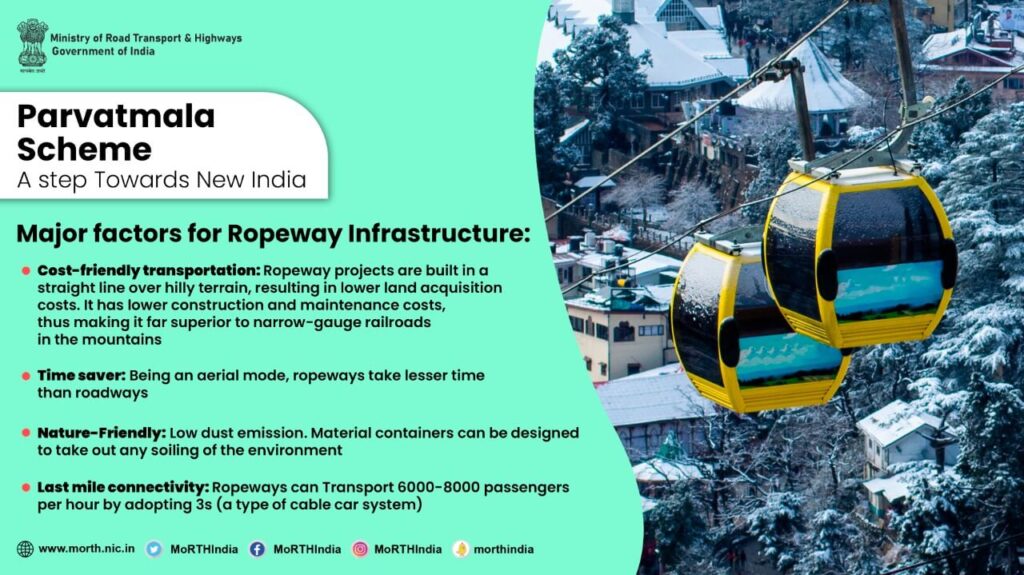
Reduced Travel Time: Ropeways offer a quick and effective form of transportation that was previously difficult to use or time-consuming in mountainous terrains.
Environmental Sustainability: Ropeways do less environmental damage than conventional road building. They consume less area, lessen soil erosion, and do the least amount of damage to regional ecosystems.
Safety and Reliability: Safety is a primary concern while designing ropeways. They are designed to resist a variety of weather scenarios and natural disasters, providing a dependable mode of transportation even in trying situations.
Tourism Promotion: Ropeways can draw tourists because of their scenic beauty and unique experiences, which increases foot traffic and generates more money for nearby companies and towns.
Challenges and Considerations of Parvatmala Project:
The Parvatmala Project has a lot of potential, but there are also some issues that need to be taken into account.
Infrastructure and Engineering: Ropeway systems must be established with careful design, engineering prowess, and attention to safety regulations. It is essential to make sure the infrastructure is reliable and resilient.
Local Involvement: The project’s success depends on the community’s active participation and backing. During the planning and implementation phases, you must take into account their viewpoints, requirements, and issues.
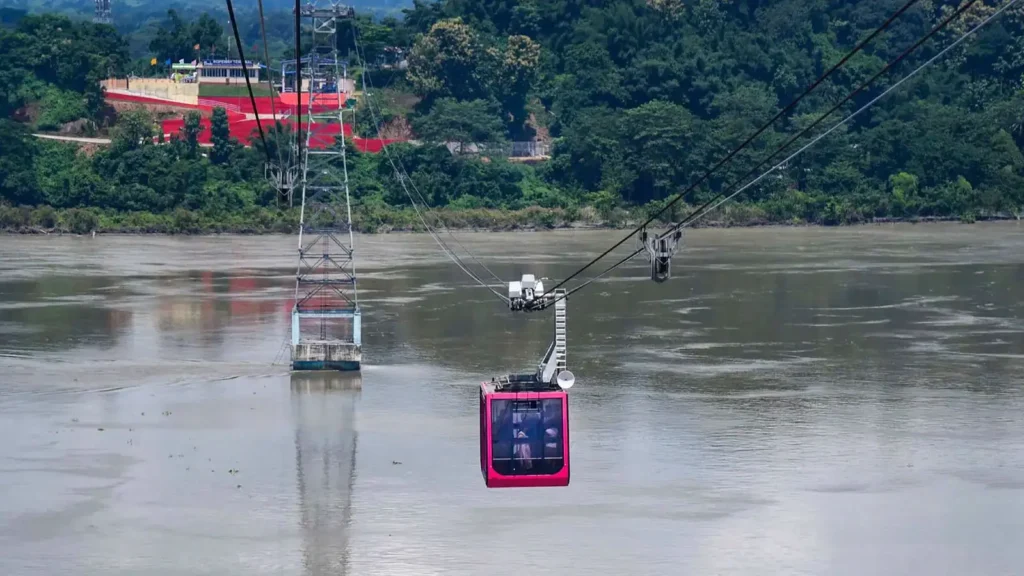
Environmental Impact: Despite being largely environmentally favourable, ropeways’ construction and use can nonetheless have an impact on nearby ecosystems. Mitigation strategies and thorough environmental assessments are crucial.
Current Situation of Parvatmala Project:
The project’s main goal is to improve commuter connectivity and convenience while also promoting tourism. This may also include congested urban regions where conventional mass transit systems are not feasible.
The Parvatmala Project is currently being implemented in Uttarakhand, Himachal Pradesh, Manipur, Jammu and Kashmir, and other North-East States.
Read More : Operation Black Tornado: When Bravery Conquers Fear
Ropeway between Dharamshala and Mcleoadganj is already developed which is turning out to be a game changer for the city of Mcleodganj which was facing the problem of efficient parking for many years.
In January 2023, the Union Minister Mr. Nitin Gadkari announced the construction of 13 new ropeways in the state of Himachal Pradesh.
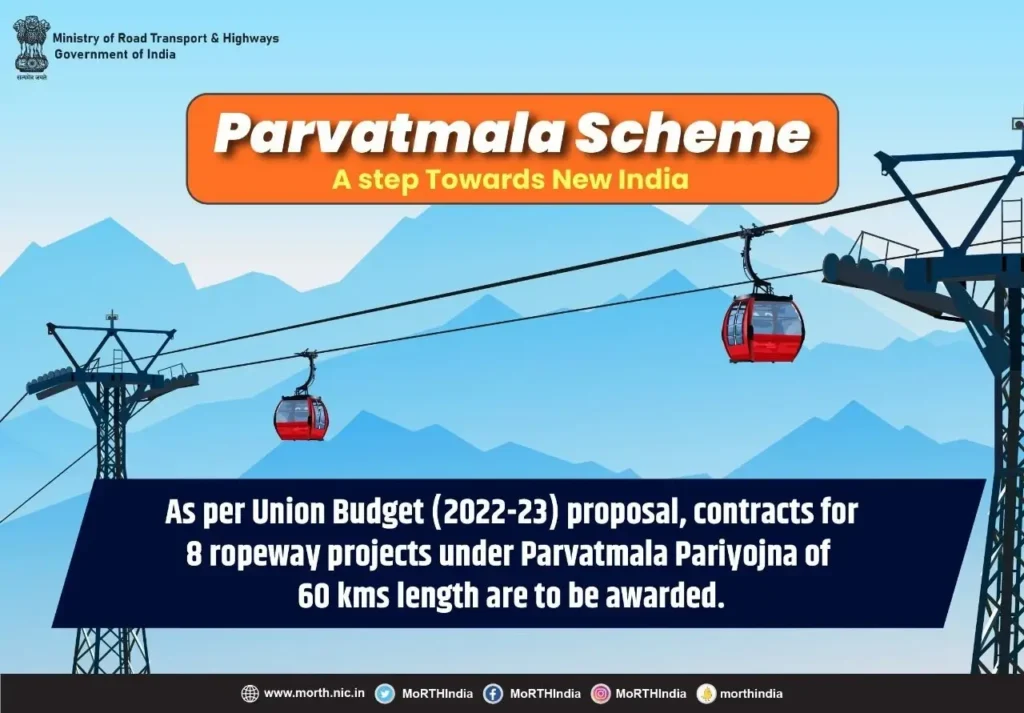
Conclusion:
Transforming travel, connection, and tourism in India’s hilly regions has never been easier thanks to the Parvatmala Project under the National Ropeways Development Programme. The initiative intends to close geographic gaps, advance economic growth, and reveal the untapped potential of these stunning landscapes by utilizing ropeway technology. The Parvatmala Project might serve as a bright example for similar initiatives around the world, demonstrating the peaceful cohabitation of modern transportation and natural beauty, with careful design, community involvement, and a dedication to sustainability.
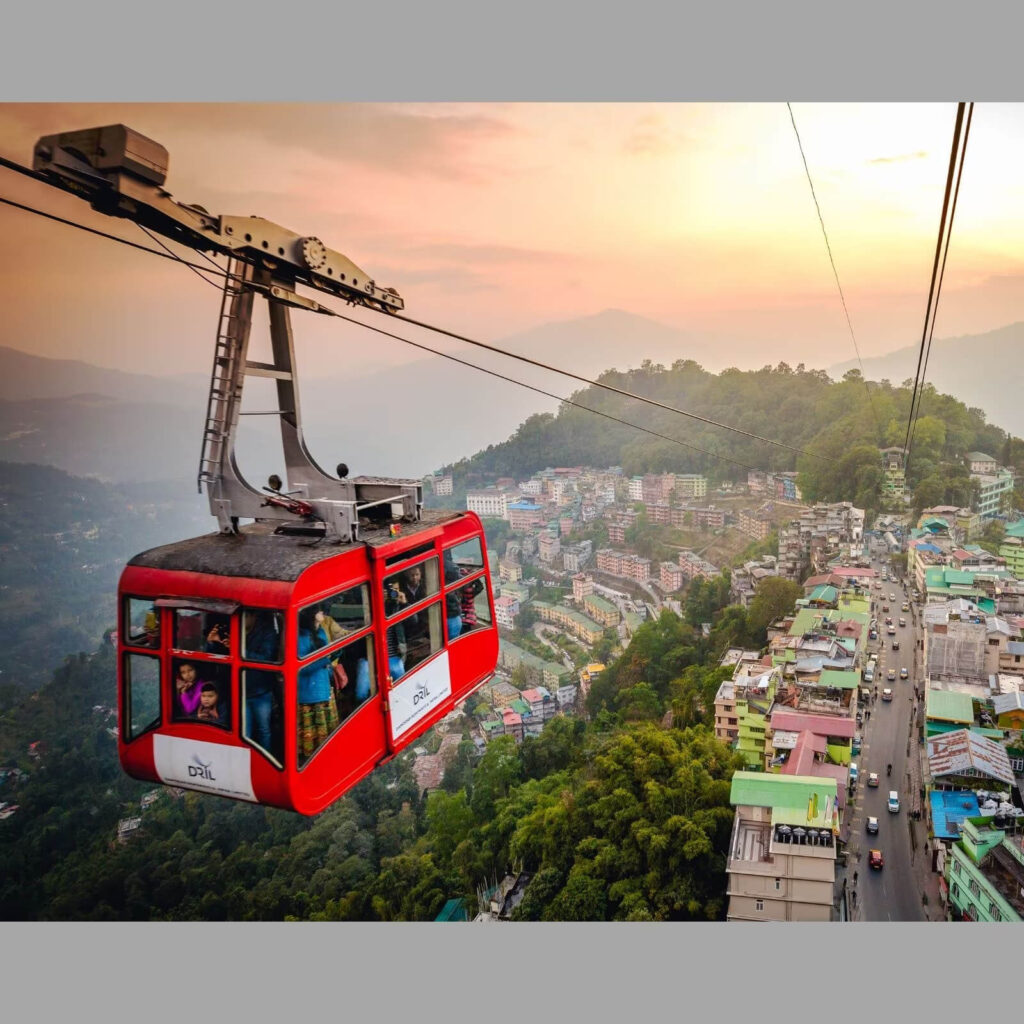
1 thought on “Exploring the Parvatmala Project: National Ropeways Development Programme”